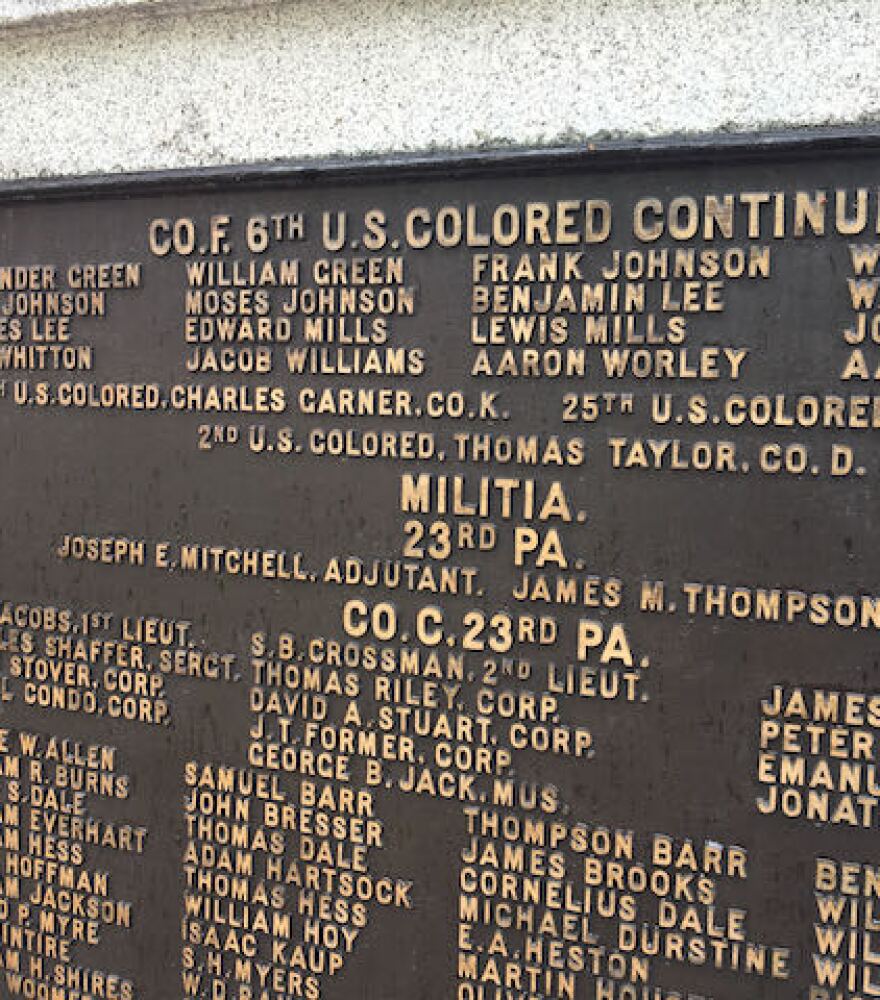There’s a new self-guided online walking tour in Bellefonte that shows users how to get to historic sites in town that were stops on the Underground Railroad. You can follow the tour map on your phone, and read more about the history of each place you visit.
The new tour was inaugurated on a rainy day in May with a gathering at the Bellefonte Art Museum. After a brief orientation, the visitors went off on their own, phones in hand, to try the walking tour at their own pace.

The Linn House, which houses the museum, was a stop on the Underground Railroad -- and it’s the first stop on the website map for the walking tour. The Bellefonte Art Museum has a permanent exhibit on the subject, in a small hidden room near the roof of the house, which might have actually been used to hide Blacks seeking freedom. Prateek Gupta of Bellefonte took the tour and found the exhibit chilling.
“On the top floor, where they have the setup in the attic of how the people lived during that time – that was really gut-wrenching and goosebumpy,” Gupta said.
Renea Nichols, who teaches communications at Penn State, is a Bellefonte history aficionado and a consultant for the exhibit.
“You notice right away that it’s a very small space,” Nichols said. “And your head is probably touching the ceiling. But you’re definitely going to be feeling kind of cramped.”

Visitors to the museum can’t go into that room, for safety reasons. Instead they see an artistic depiction of freedom-seekers, huddled in the room, through a pane of glass. But they can get a feel for the claustrophobia people would have experienced there, by opening a small hatch inside a closet. It serves as a passageway to the secret room.
“Once you open the little hatchet,” Nichols said, “you can kind of crawl in there.”
She recalled how she felt when she first encountered the space.
“Something comes over you,” Nichols said. “And I don’t know if it’s because I’m Black. I don’t know if other people felt this, but for me, I just felt like, wow - people were in here. And they were probably afraid for their lives.”
In that tiny room near the roof, she said, the freedom-seekers could probably hear sounds from many directions.
“You could probably hear below you, people coming, you know, on horses. And it was probably just the most terrifying experience. That’s what I thought about, when I stood in that space, just looking through that window at this secret room.”

The next stop on the Underground Railroad tour is the Centre County Courthouse, where a plaque honors the U.S. Colored Infantry and Militia, who served during the Civil War.
Then the tour moves down the street from the courthouse, to The Governor’s Pub. It’s believed to be the location of a barbershop owned by a prominent Black citizen of Bellefonte, William H. Mills.
Historian Matt Maris from Bellefonte said Mills was active in St. Paul's AME church, a cultural hub for the Black community in Bellefonte.
“And it would have been a place of refuge for freedom seekers during that time period,” Maris said.
The church is another stop on the self-guided Underground Railroad Tour.
“And much of the Underground Railroad history we know," Maris said, ”is because he wrote about it when he wrote a history of the AME church when they were trying to raise money to rebuild it after a fire in 1909.”

Maris said Mills was also active in local schools. He and some other citizens lobbied for school desegregation in Bellefonte.
“He was on the committee that asked to desegregate the schools,” said Maris. “And they did, in 1885.”
That was 69 years before Brown vs. Board of Education.
“Yeah, it’s amazing," Maris said. “But it did happen in other Pennsylvania towns. In Altoona, this happened prior to Bellefonte. These were results of actions of people involved in the Equal Rights League. And there’s a trend of black barbers, business owners, being a part of these leagues and advocating for equal rights and school desegregation.”
Mills was also known locally as a talented singer. His grandchildren formed The Mills Brothers, who became huge singing stars, from the 1930’s into the 1970’s. You can read about them on the tour’s website, along with many other anecdotes relating to the Underground Railroad sites in Bellefonte.
Jennifer Heller of Pine Grove Mills brought her family on the tour to learn about local history.
“We brought both of our children along,” Heller said. “Jacob is 12 and Amelia is 9. We loved the tour. I was really attracted to the fact that it was at your own pace.”
She said the self-guided nature of the tour works well for families and kids because it’s flexible: you can stop if you need to and pick up where you left off later.
The self-guided online tour and the Underground Railroad exhibit at the Bellefonte Art Museum will continue for the foreseeable future, helping locals learn about Black history in Bellefonte.
Historian Matt Maris, interviewed for this story, also hosts other walking history tours in Central Pennsylvania.



